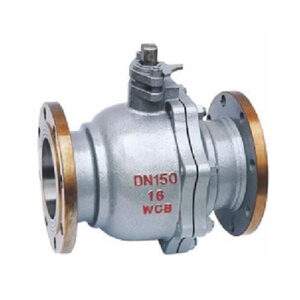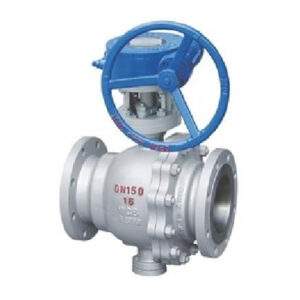Introduction

A hydraulic ball valve is a shut-off valve that controls the flow of hydraulic fluid in a hydraulic system. It uses a rotating ball with a bore to control the flow. When he bore is aligned with the flow path, the valve is open, and when it’s perpendicular, the valve is closed. Hydraulic ball valves are known for their quick operation, tight sealing, and durability, making them essential components in various industries. This blog post will delve into the numerous benefits of using hydraulic ball valves and explain why they are preferred in many hydraulic applications.
Understanding the Importance of Hydraulic Ball Valves in Modern Systems
In today’s complex machinery and industrial processes, hydraulic systems play a crucial role. These systems rely on the precise control of fluid flow and pressure to perform various tasks, from heavy lifting to delicate movements. Hydraulic ball valves are integral to this control, offering reliable on/off functionality and contributing to the overall efficiency and safety of the system. Their ability to quickly stop or start the flow of hydraulic fluid is vital in emergency situations and automated processes.
Key Advantages of Hydraulic Ball Valves
Hydraulic ball valves offer several distinct advantages over other types of valves, making them a popular choice in hydraulic systems. These advantages include:
Quick and Easy Operation of Hydraulic Ball Valves
One of the most significant benefits of a hydraulic ball valve is its quick operation. A simple quarter-turn (90 degrees) of the handle is all that is required to fully open or close the valve. This rapid action is crucial in applications where immediate shut-off or flow initiation is needed. This ease of operation also contributes to the automation of hydraulic systems, as these valves can be easily actuated by electric or pneumatic operators.
Excellent Sealing Capability of Hydraulic Ball Valves
Hydraulic ball valves provide an excellent seal when closed, minimizing leakage. The ball is pressed against the valve seats, creating a tight seal that effectively blocks the flow of fluid. This tight sealing is essential in hydraulic systems where even small leaks can lead to pressure loss, reduced efficiency, and potential safety hazards. The design of many hydraulic ball valves also incorporates features like pre-loaded seats and specialized sealing materials, further enhancing their leak-tight performance.
Durability and Reliability of Hydraulic Ball Valves in Harsh Environments
Hydraulic ball valves are generally robust and durable, capable of withstanding high pressures and harsh operating conditions. They are often constructed from materials like stainless steel or brass, which are resistant to corrosion and wear. This durability ensures a long service life and reduces the need for frequent maintenance or replacement, even in demanding industrial applications.
Low Maintenance Requirements for Hydraulic Ball Valves
Compared to other valve types, hydraulic ball valves require minimal maintenance. Their simple design and durable construction contribute to their long-lasting performance with little upkeep. Regular inspection for wear and tear and occasional lubrication are usually sufficient to keep these valves functioning optimally. This low maintenance requirement translates to reduced downtime and cost savings for users.
Compact Design and Installation Flexibility of Hydraulic Ball Valves
Hydraulic ball valves are relatively compact and lightweight, making them easy to install in various configurations. Their small size is advantageous in applications where space is limited. The availability of different connection types (threaded, flanged, welded) further enhances their installation flexibility.
Versatility of Ball Valves in Different Applications
Ball valves are highly versatile and can be used in a wide range of hydraulic applications, including:
- Industrial Machinery: Controlling hydraulic cylinders in presses, injection molding machines, and other industrial equipment.
- Mobile Hydraulics: Controlling fluid flow in construction equipment, agricultural machinery, and material handling systems.
- Oil and Gas: Used in pipeline systems, refineries, and offshore platforms for controlling the flow of oil and gas.
- Aerospace: Employed in aircraft hydraulic systems for controlling flight surfaces and landing gear.
- Water Treatment: Used for flow control and isolation in water and wastewater treatment plants.
Technical Specifications of Hydraulic Ball Valves
Understanding the technical specifications of ball valves is crucial for selecting the right valve for a specific application. Key specifications include:
- Pressure Rating: The maximum pressure the valve can handle.
- Temperature Range: The operating temperature range of the valve.
- Port Size: The size of the inlet and outlet ports.
- Material of Construction: The materials used to manufacture the valve body, ball, and seats.
- Connection Type: The type of connection used to connect the valve to the hydraulic system (threaded, flanged, welded).
- Actuation Type: Manual, electric, or pneumatic.
The following table illustrates typical specifications for different types of hydraulic ball valves:
| Feature | Standard Pressure Ball Valve | High Pressure Ball Valve | Stainless Steel Ball Valve |
|---|---|---|---|
| Pressure Rating | Up to 5000 PSI | Up to 10000 PSI | Up to 6000 PSI |
| Temperature Range | -20°F to 250°F | -40°F to 300°F | -40°F to 400°F |
| Body Material | Carbon Steel | High-Strength Steel | Stainless Steel 316 |
| Seat Material | PTFE | Peek | PTFE/Filled PTFE |
| Typical Applications | General Industrial Use | Heavy Machinery | Corrosive Environments |
Proper Selection and Installation of Hydraulic Ball Valves
Choosing the correct hydraulic ball valve for your application is critical for optimal performance and safety. Consider the following factors:
Selecting the Right Hydraulic Ball Valve for Your Application
- System Pressure and Temperature: Ensure the valve’s pressure and temperature ratings meet the system requirements.
- Fluid Compatibility: Choose valve materials that are compatible with the hydraulic fluid being used.
- Flow Rate: Select a valve with a port size that can handle the required flow rate.
- Application Requirements: Consider specific application needs, such as quick operation, tight sealing, or resistance to specific chemicals.
Best Practices for Installing Hydraulic Ball Valves
- Cleanliness: Ensure the hydraulic system and the valve are clean before installation.
- Proper Threading and Connections: Use appropriate thread sealant and tighten connections to the correct torque.
- Orientation: Install the valve in the correct orientation as specified by the manufacturer.
- Testing: Test the valve after installation to ensure proper operation and leak-tightness.
Maintenance and Troubleshooting of Ball Valves

While ball valves require minimal maintenance, regular inspction and occasional maintenance can prolong their service life.
Routine Maintenance Procedures for Ball Valves
- Regular Inspections: Check for signs of wear, leakage, or damage.
- Lubrication: Lubricate the valve stem and moving parts as needed.
- Cleaning: Clean the valve and surrounding area to remove dirt and debris.
Common Problems and Troubleshooting Tips for Ball Valves
- Leakage: Check for worn or damaged seats or seals. Replace as needed.
- Difficult Operation: Check for debris or corrosion in the valve. Clean or replace the valve.
- Valve Not Closing Completely: Check for obstructions in the flow path or damage to the ball or seats.
Conclusion
Hydraulic ball valves offer numerous advantages, including quick operation, excellent sealing, durability, low maintenance, and versatility. These benefits make them a preferred choice in a wide range of hydraulic applications. By understanding their features, specifications, and proper usage, you can maximize the performance and reliability of your hydraulic systems. The proper selection, installation, and maintenance of hydraulic ball valves are crucial for ensuring safe and efficient operation.
FAQ
What is the difference between a ball valve and a globe valve in hydraulic systems?
A ball valve uses a rotating ball to control flow, while a globe valve uses a movable disc. Ball valves offer quicker operation and tighter sealing, while globe valves are better suited for throttling flow.
How do I choose the right size hydraulic ball valve for my system?
Consider the system’s flow rate, pressure, and connection size when selecting a hydraulic ball valve. The valve’s port size should match the system’s pipe or hose size to avoid flow restrictions.
What are the common causes of ball valve leakage?
Common causes include worn or damaged seats and seals, contamination in the fluid, and improper installation.
How often should I maintain my hydraulic ball valves?
Regular inspections should be conducted periodically, depending on the application and operating conditions. Lubrication and cleaning may be required less frequently.
Can ball valves be used for throttling flow?
While some ball valves are designed for throttling, they are generally not ideal for this purpose. Globe valves or needle valves are better suited for precise flow control.
